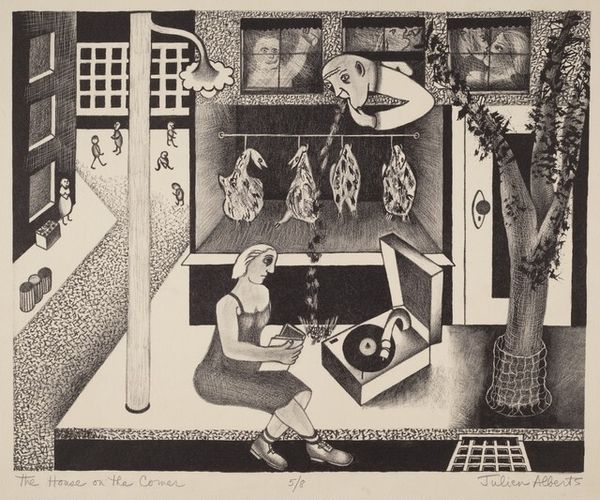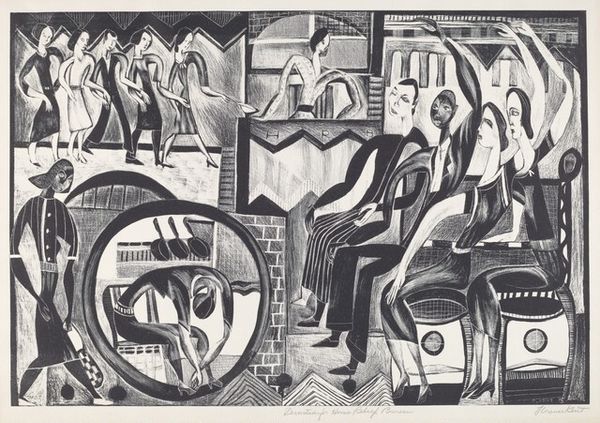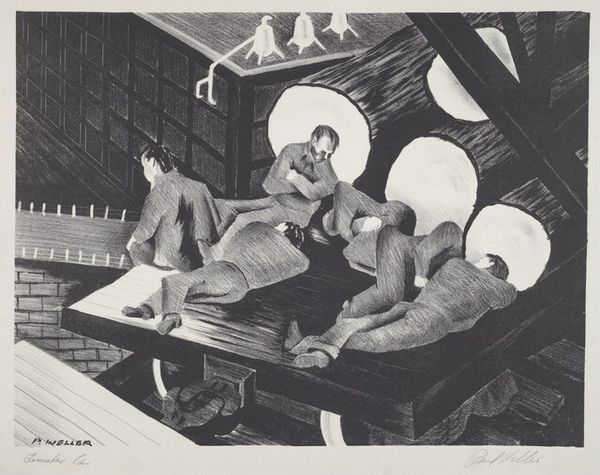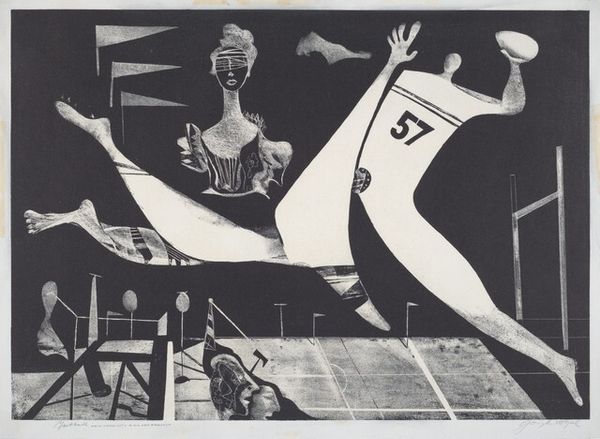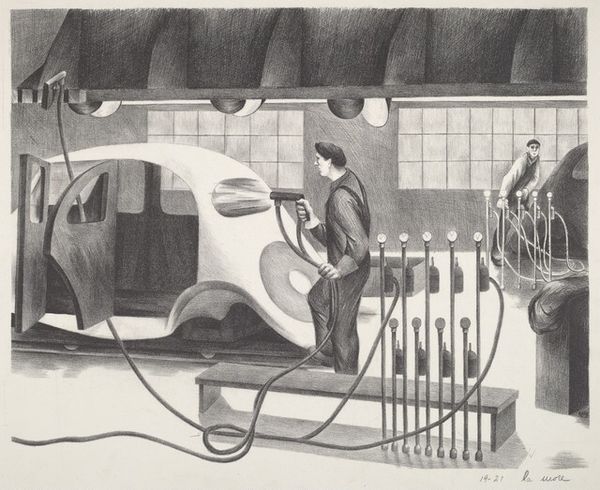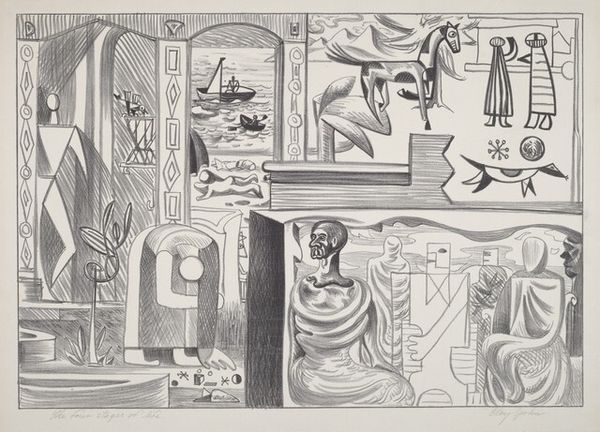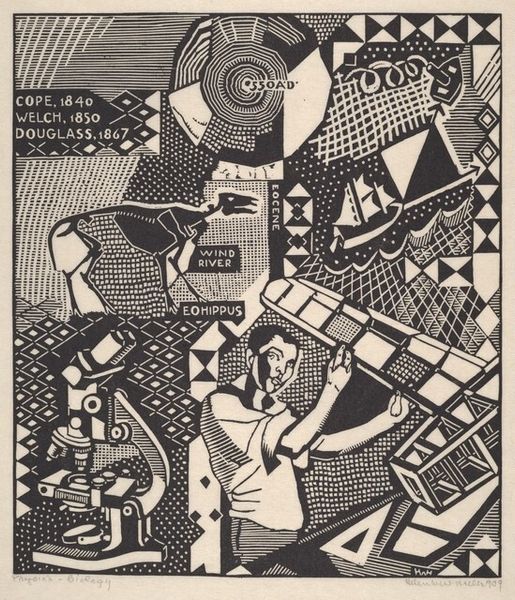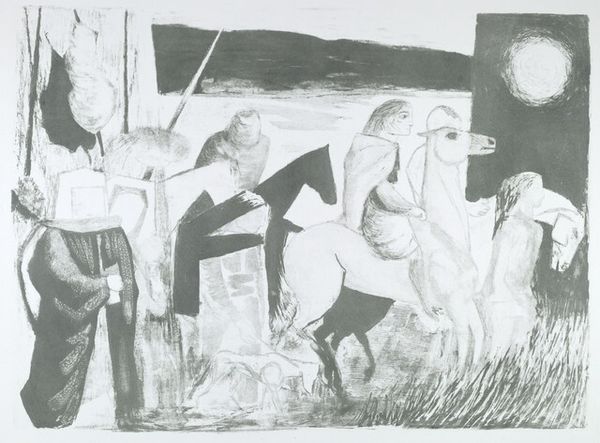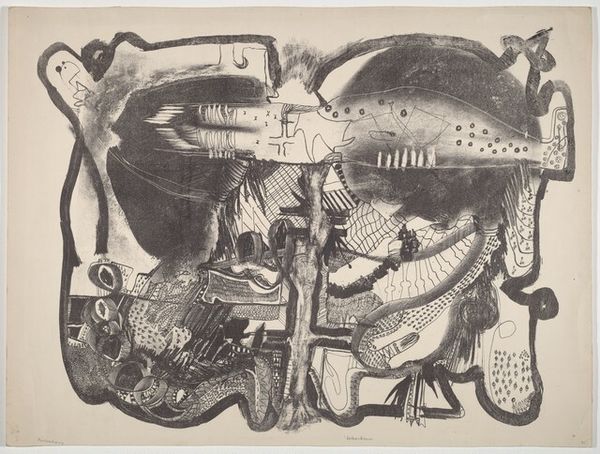
drawing, print
#
portrait
#
drawing
# print
#
figuration
#
history-painting
#
modernism
Dimensions: image: 307 x 412 mm sheet: 407 x 580 mm
Copyright: National Gallery of Art: CC0 1.0
Curator: Looking at this rather jarring print, we see Julien Alberts’ "Variant on History Pastiche, No. 1", created in 1935. Editor: My initial feeling? Viscerally unsettling. The harsh blacks and whites create this high-contrast landscape that is populated with historical vignettes that feel nightmarish when juxtaposed in this way. The process—likely some kind of lithograph or woodcut—enhances the anxiety. Curator: It is a lithograph, yes. The piece is riddled with historical references: a figure in a tub reminiscent of the Death of Marat, dancers seemingly out of Weimar Republic era, and the Nazi salute—all layered without clear narrative, reflecting, I think, on the interwar period’s historical anxieties. Editor: Precisely. Note how the stark, graphic quality of the lithograph allows Alberts to cram so much symbolism into a small space without losing clarity. Consider, too, how lithography as a reproductive medium democratizes this chaotic commentary on history. This isn't an oil painting for the elite; this is reproducible imagery for the masses. Curator: Yes, its reproducibility enabled wide distribution during times ripe for propagandistic imagery—a very loaded possibility indeed. But, at the same time, this work uses jarring dissonance in its historical echoes as a way to break from official narratives. What message it might deliver to "the masses," though, I confess I cannot easily decide. Editor: I think that may be part of its power; it is not so didactic as propaganda but opens the way for social reflection. And considering the labor-intensive process behind the original plate, that it was done as lithography only serves to broaden its impact. Each print bears the mark of this production—a tangible connection to the artist’s hand. Curator: So it operates almost as an anti-monument in its approach to the grand sweep of "history painting" traditionally conceived, doesn’t it? Pulling down the narratives through material form. Editor: Yes, definitely. By embracing reproducibility through labor-intensive methods, and presenting its viewers with dissonant but recognizable symbolism, the artist invites a wider audience to consider history outside of establishment parameters. Curator: That’s a great way to frame it. It’s interesting how such seemingly simple methods allow the artwork to embody multiple lines of conflicting narratives. Editor: I concur. It challenges the hierarchy of media.
Comments
No comments
Be the first to comment and join the conversation on the ultimate creative platform.

